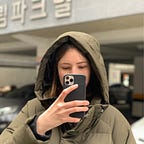Just before the summer break, everyone in the class did Crazy 8’s together to get us thinking.
Although I was not entirely convinced by the ideas I had drawn out, they got me thinking about possible ways forward.
A singular brainstorm
My group decided to each spend some time on their own during the summer to think about the project. Because I was a little worried about how wide our scope was, I decided to explore its breadth and pick out some key attributes. I organised the experience into three parts, so I could discuss it further with my team after the holidays.
Part 1: Organisation
I imagined the experience to begin once a set of vocabulary was uploaded. At this point I had not thought of why they would have this set, other than it would be vocabulary they wanted to learn. The next step would be the organisation of these words, which would be linked by association. At this point I did not know if these links would be made by the user, or by the system. The hope with this was to create a “web of understanding”, to which you could easily refer.
Part 2: Input + Exposure
To help understand each one, the user would now have to create a visual library around the words. This would be to help contextualise the words by relating them to the scenarios in which they could be used. For example, for the words “feet hurt”, the user could upload (in no particular order):
- dictionary definitions for each word
- example sentences: “I kicked the door and now my feet hurt”
- a video of a person experiencing pain in their foot
- a cartoon image drawn with a star to visually emphasise pain
- and finally a selection of movie scenes showing the words “feet hurt” in different scenarios (Playphrase.me. 2021).
Each one varied in its effectiveness, but combined they helped provide a fuller picture of what the words mean. However, at the moment this idea is not quick to make, and would have to have a degree of automation if adopted as a project direction.
Part 3: Use
Language is experiential — it’s meant to be used. I thought the final stage of the experience would be to put it into use. I had two ideas: the first (on the left) was through a messaging game, where you are talking to a character (in the image above I chose an alien robot) that you can’t understand — the character would speak in gibberish. The goal of the conversation would be to teach them the language you are learning by trying to explain it with your previous collections of visuals (from part 2) & webs of understandings (from part 1). This idea was quite ambitious, and not yet properly based in research. Although, I was excited at how unusual the learning experience would be, which could potentially help its memorability.
The second idea (on the right) was to learn with a group of people who are all learning the same language. It would take place online, where a story would be generated based on each players’ uploaded vocabulary. The players would then be given a starting point for the story, with a goal to reach a pre-determined end-point. They would then have to use the language they are learning to progress the narrative in turns, until they reached the end-point. The interaction would be through typing, however there would be visuals generated above where the players would type that show the story typed playing out. This idea was also quite ambitious — I had no idea how the story, or accompanying images would be generated. However, like the first idea, I was excited by it and decided to leave it to explore with the group when we next meet up.
>>> For my next post on the project, click here.
References
- Playphrase.me. 2021. PlayPhrase.me: Site for cinema archaeologists.. [online] Available at: <https://www.playphrase.me/#/search>.
